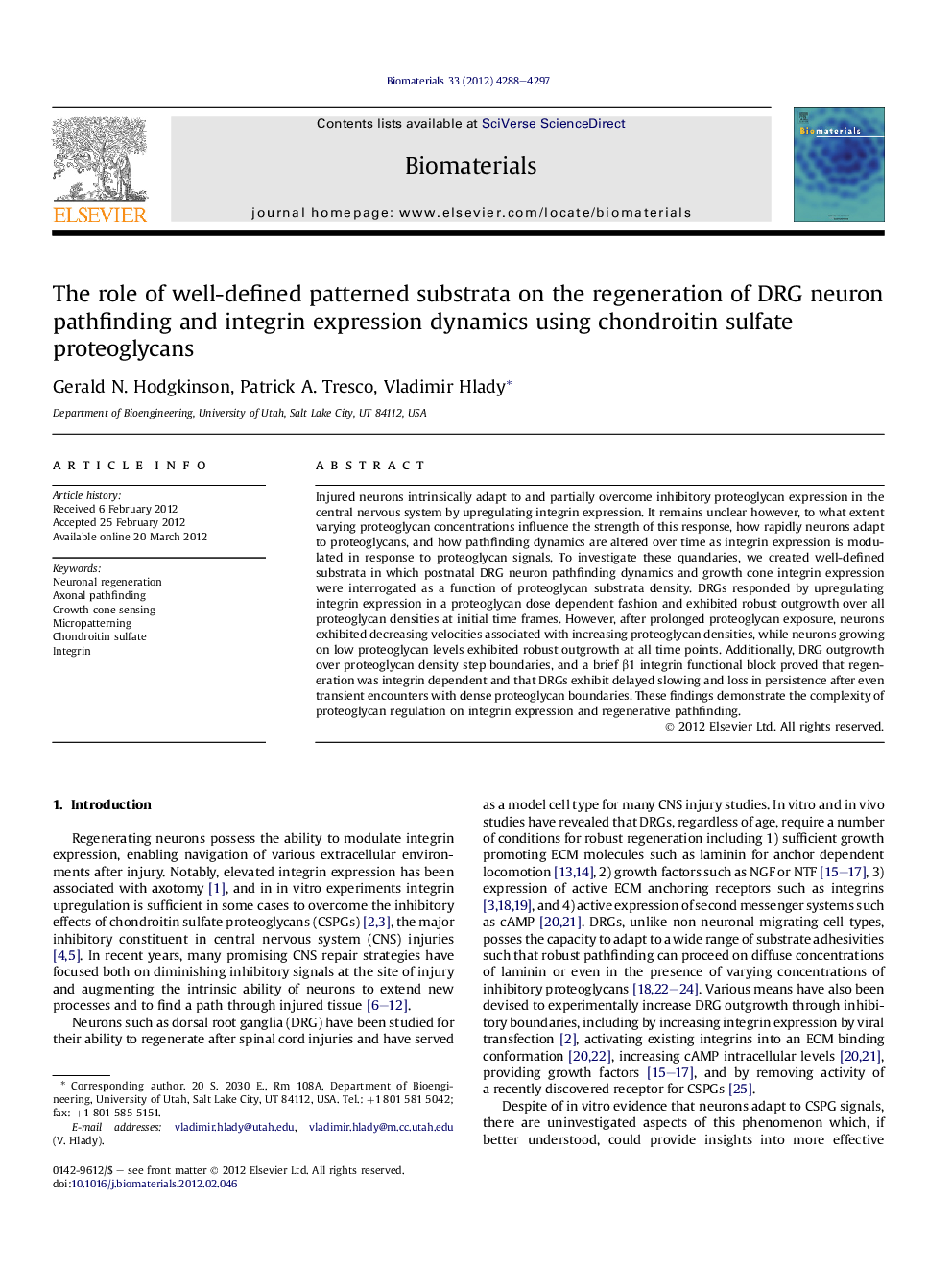| Article ID | Journal | Published Year | Pages | File Type |
|---|---|---|---|---|
| 10229233 | Biomaterials | 2012 | 10 Pages |
Abstract
Injured neurons intrinsically adapt to and partially overcome inhibitory proteoglycan expression in the central nervous system by upregulating integrin expression. It remains unclear however, to what extent varying proteoglycan concentrations influence the strength of this response, how rapidly neurons adapt to proteoglycans, and how pathfinding dynamics are altered over time as integrin expression is modulated in response to proteoglycan signals. To investigate these quandaries, we created well-defined substrata in which postnatal DRG neuron pathfinding dynamics and growth cone integrin expression were interrogated as a function of proteoglycan substrata density. DRGs responded by upregulating integrin expression in a proteoglycan dose dependent fashion and exhibited robust outgrowth over all proteoglycan densities at initial time frames. However, after prolonged proteoglycan exposure, neurons exhibited decreasing velocities associated with increasing proteoglycan densities, while neurons growing on low proteoglycan levels exhibited robust outgrowth at all time points. Additionally, DRG outgrowth over proteoglycan density step boundaries, and a brief β1 integrin functional block proved that regeneration was integrin dependent and that DRGs exhibit delayed slowing and loss in persistence after even transient encounters with dense proteoglycan boundaries. These findings demonstrate the complexity of proteoglycan regulation on integrin expression and regenerative pathfinding.
Related Topics
Physical Sciences and Engineering
Chemical Engineering
Bioengineering
Authors
Gerald N. Hodgkinson, Patrick A. Tresco, Vladimir Hlady,
